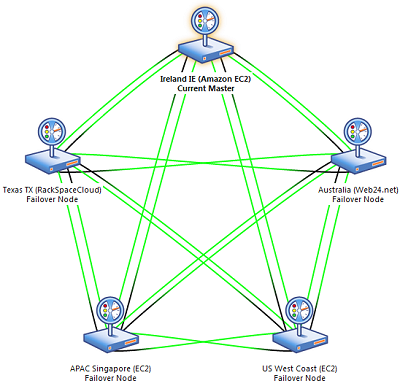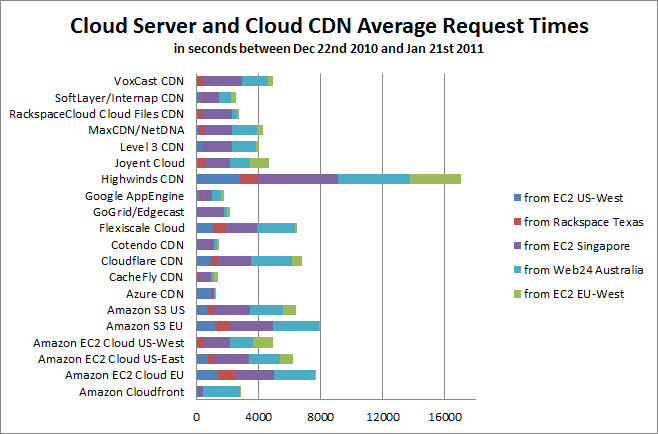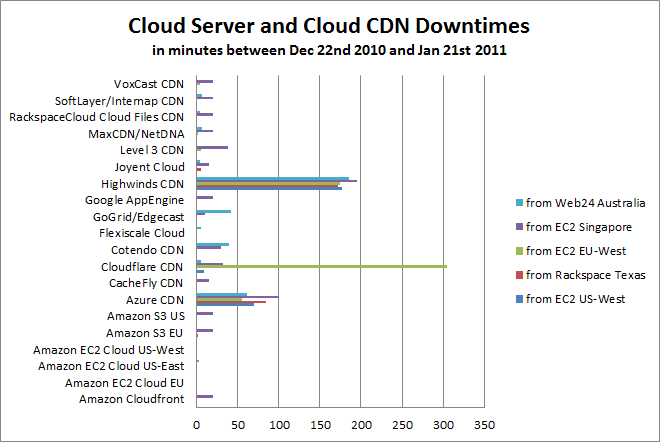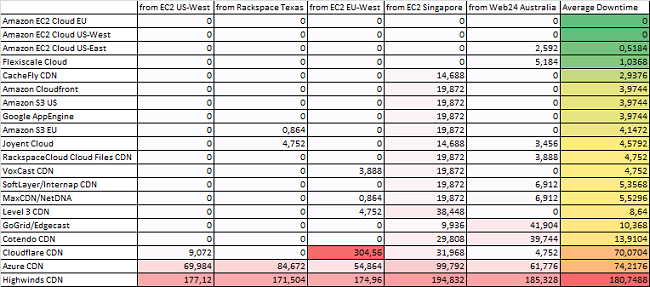The PRTG Cluster

- Amazon EC2 US West (California)
- RackSpaceCloud (Texas)
- Amazon EC2 EU West (Ireland)
- Amazon EC2 APAC (Singapore)
- Web24 (Australia)
The Monitored Servers
In a PRTG cluster all nodes are permanently connected to each other to run as a distributed and failsafe monitoring system. The nodes are automatically synchronized to monitor a specified set of network devices or services. In this case we are monitoring 20 URLs, a 64 kbyte GIF file served by the following servers, and CDNs (either using our own accounts or accounts from our friends by clicking here):
- Amazon EC2 Cloud EU
- Amazon EC2 Cloud US-West
- Amazon EC2 Cloud US-East
- Amazon Cloudfront
- Amazon S3 US
- Amazon S3 EU
- Flexiscale Cloud
- CacheFly CDN
- Google AppEngine
- Joyent Cloud
- RackspaceCloud Cloud Files CDN
- VoxCast CDN
- SoftLayer/Internap CDN
- MaxCDN/NetDNA
- Level 3 CDN
- GoGrid/Edgecast
- Cotendo CDN
- Cloudflare CDN
- Azure CDN
- Highwinds CDN
Results 1: Average Request Times

Results 2: Downtimes
The following graph shows the total downtimes (in minutes) over 30 days. High values mean high downtimes.
Results 3: Downtimes versus Request Times
From a server we expect reliability AND speed. The following chart shows us that you can not get one without sacrificing the other:
The Verdict of January 2011
Looking at the results of this 30 day monitoring effort (in total our servers sent 870.000 requests for this test) I would consider Cachefly CDN and Google AppEngine (which is not even a CDN in the first place) to be the two best offerings. The runner-ups are Amazon Cloudfront, Rackspace Cloudfile, and the Softlayer CDN, all of them are quite close to the two top services. They all are very fast around the globe and show the least downtime, as well. If we leave out the 20 minutes of connectivity issues on the Amazon APAC data center then all these five services would have had zero downtime during our test time. The three services Highwinds CDN, Azure CDN, and Cloudflare had serious downtimes which are not really acceptable for a CDN (IMHO). Finally, here are the detailed numbers for our downtime measurements:
 Published by
Published by 












